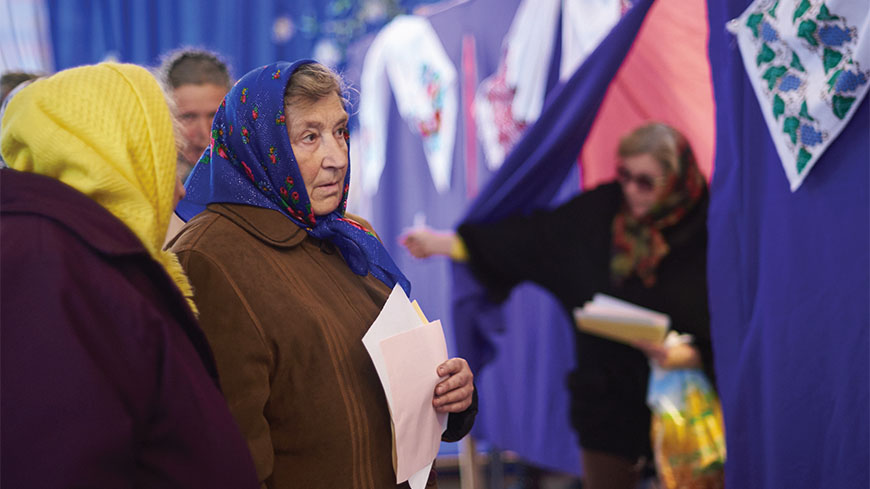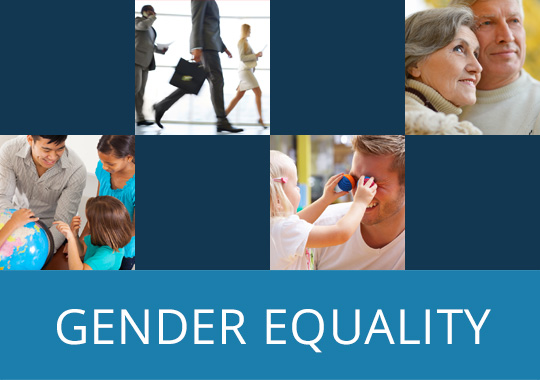Electoral assistance and census

Gender-specific aspects can be considered in relation to elections, such as the under-representation of women in political and public decision-making, as candidates, as elected decision-makers and in higher levels of the electoral administration, as well as regarding mechanisms to improve the situation. This includes a range of issues such as the role of electoral law, political parties and media, gender-sensitive citizenship education, and the monitoring of elections. Other relevant issues are different voting patterns between women and men, and the involvement of women’s NGOs in activities related to elections. Population census are one of the most important tools for policymakers, as they take stock of the most important asset of a country - its human capital - and allow for the collection of the sex-disaggregated data that is vital for gender equality policies and gender mainstreaming. Census is therefore a rich source of information about the differences between women and men, girls and boys, as well as about their specific needs. Integrating a gender equality perspective in census methods and analysis is vital for policy planning.
Gender mainstreaming in electoral assistance and census at the Council of Europe
Since the early 1990’s, the Council of Europe has worked to support citizen’s participation in elections and in political life, with a special emphasis on women. Women voters and candidates are one of the five topics dealt with by the Division of Electoral Assistance and Census. Activities have been undertaken under the Eastern Partnership Programme in Armenia, Belarus, Georgia, the Republic of Moldova and Ukraine on women’s participation in decision making. In this context, a documentary was produced in 2014 and in 2016, a workshop was organised to address the range of barriers to the realisation of gender equality in political decision making in Ukraine. A regional study on women political representation in the Eastern Partnership countries (Armenia, Azerbaijan, Belarus, Georgia, Moldova, and Ukraine) showed that in all the countries surveyed women were less likely to run for political office and to be elected both to the national parliaments and to local government bodies. The study also concluded that women held less than 20% of seats in parliament in all the countries, with the exception of Belarus.
Achieving a balanced participation of women and men in political and public decision making is one of the six objectives of the Council of Europe Strategy on Gender Equality 2018-2023. In 2003, the Committee of Ministers of the Council of Europe adopted Recommendation CM/Rec(2003)3 on balanced participation of women and men in political and public decision making, setting the objective of a minimum representation of each sex at 40%. The Analytical Report on the Third round of monitoring of Council of Europe Recommendation Rec (2003) 3 on balanced participation of women and men in political and public decision-making provides comprehensive data on six domains of decision making for 2016. In a Resolution entitled Assessing the impact of measures to improve women’s political representation, the Council of Europe Parliamentary Assembly called on member States to “consider introducing the principle of parity into their constitution or into their electoral legislation”. Also in 2016, the Congress of Local and Regional Authorities adopted a Recommendation on women’s political participation and representation at local and regional levels.
See also section on governance and constitutional matters.
Council of Europe's activities and tools
- ElecData, Compendium of Electoral Data
- Participation of young women and girls from disadvantaged groups in political and public decision-making processes at local level, Toolkit, 2020
Ukrainian - Gender equality in parliaments, Electoral Assistance Division, Council of Europe, 2019
- Balanced participation of women and men in decision-making - Analytical Report on the Third round of monitoring of Council of Europe Recommendation Rec (2003) 3 on balanced participation of women and men in political and public decision-making (2016 data), Council of Europe Gender Equality Commission, 2017
- Women’s political representation in the Eastern Partnership countries, Regional study, Council of Europe, 2017
- Media coverage of elections with a specific focus on gender equality, Study, Council of Europe Committee of Experts on Media Pluralism and Transparency of Media Ownership (MSI-MED), 2017
- Resolution 2111 (2016) Assessing the impact of measures to improve women’s political representation, Council of Europe Parliamentary Assembly, 2016
- Recommendation on women’s political participation and representation at local and regional levels, Council of Europe Congress of Local and Regional Authorities, 2016
- Compilation of Venice Commission Opinions and Reports Concerning Gender Equality, Council of Europe Venice Commission, 2016
- Methods of nomination of candidates within political parties, Report, Council of Europe Venice Commission, 2015
- Regional conference on gender equality and electoral processes, Council of Europe Venice Commission, 2015
- The Impact of Electoral Systems on Women’s Representation in Politics, Report, Council of Europe Venice Commission, 2009
- Recommendation of the Committee of Ministers on balanced participation of women and men in political and public decision making, Council of Europe, 2003
Other resources
- Better Governance for Gender Equality – Organisation for Economic Co-operation and Development (OECD), 2017
- Compendium of Good Practices for Advancing Women’s Political Participation in the OSCE Region – Organization for Security and Co-operation in Europe (OSCE), 2016
- OECD Recommendation of the Council on Gender Equality in Public Life, Organisation for Economic Co-operation and Development (OECD), 2015
- Toolkit for Gender Equality in Governance: Implementing the 2015 OECD Recommendation on Gender Equality in Public Life, Organisation for Economic Co-operation and Development (OECD), 2015
- Guide on the Gender Analysis of Census Data, United Nations Population Fund (UNFPA), 2014
- Global Database of Gender Quotas in parliaments worldwide, International Institute for Democracy and Electoral Assistance (International IDEA), Inter-Parliamentary Union and Stockholm University
- Atlas of Electoral Gender Quotas, International IDEA, 2014
- Handbook on Promoting Women’s Participation in Political Parties, Organisation for Securtiy and
- Co-operation in Europe (OSCE), 2014
- Comparative Study of Structures for Women MPs in the OSCE Region, Organisation for Security and Co-operation in Europe (OSCE), 2013
- Handbook for Monitoring Women's Participation in Elections, Organisation for Security and Co-operation in Europe (OSCE), 2004
- Gender equality in the Inter-Parliamentary Union



